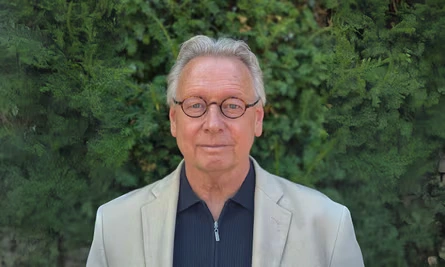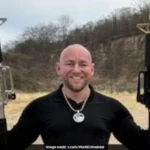London (Web Desk) – British professor Paul Workman has made a significant breakthrough in cancer research targeting chordoma. Professor Workman has dedicated several years to studying this rare and treatment-resistant bone cancer, which also claimed the life of his mother, Anna.
According to reports, chordoma affects approximately one in a million people and remains resistant to current treatment options. Workman, who was 37 when his mother passed away, expressed his deep frustration over the lack of effective treatments for chordoma at the time.
“There was very little understanding of this disease, and no medications were available to help my mother,” he said. “However, recent advancements could change this bleak scenario.”
Workman and his team, in collaboration with international researchers, have identified a crucial protein called brachyury, which plays a key role in the survival of chordoma cancer cells in the human body. The discovery of brachyury has sparked significant excitement within the research community, as it presents a potential target for disrupting chordoma. Inhibiting brachyury could significantly hinder the growth of cancer cells.
The primary challenge has been the complex structure of brachyury, which was previously considered resistant to drug development. However, in a recent publication in Nature Communications, Workman and his colleagues from institutions in Oxford and North Carolina revealed that through extensive analysis, they have identified several surface sites on brachyury that can serve as viable targets for pharmaceutical agents.
“It is gratifying to know that I am now contributing to the fight against the disease that took my mother’s life.”
This breakthrough was facilitated by the use of the Diamond Light Source synchrotron, one of the world’s most advanced X-ray generators, located in Didcot, Oxfordshire.
Workman’s team has successfully isolated several promising compounds that are currently being tested as potential treatments to inhibit brachyury and, ultimately, eliminate this key protein. Such advancements could enable healthcare professionals to tackle chordoma more effectively— a condition that has historically resisted treatment efforts.
Speaking about this progress, Workman said, “It is gratifying to know that I am now contributing to the fight against the disease that took my mother’s life.”
He further emphasized that the strategy being developed to target brachyury and chordoma has broader implications and could enhance treatment options for other prevalent cancers. “Initial observations suggest that brachyury is involved in the metastatic spread of various tumors, indicating that pharmaceutical agents designed to inhibit its function may also help curb the progression of other malignancies,” he added.








